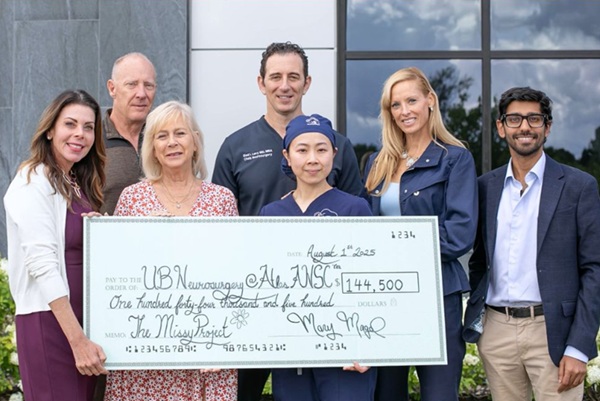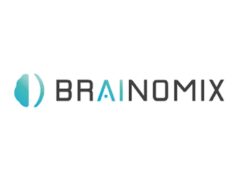 A “historic” global collaboration bringing together cutting-edge artificial intelligence (AI), neurotechnology and neuroscience has been awarded a US$144,500 grant to launch the “world’s first” multiomics research initiative attempting to help predict the risk and rupture potential of intracranial aneurysms.
A “historic” global collaboration bringing together cutting-edge artificial intelligence (AI), neurotechnology and neuroscience has been awarded a US$144,500 grant to launch the “world’s first” multiomics research initiative attempting to help predict the risk and rupture potential of intracranial aneurysms.
The collaboration sees technology companies Nova Neuro and Prima Mente partner with University at Buffalo Neurosurgery (UBNS; Buffalo, USA) and the university’s Ambulatory Neurosurgery Center (ANSC), as well as non-profit organisation The Missy Project, with the goal of accelerating AI-driven multiomics brain research to prevent deadly aneurysm ruptures.
“This isn’t just research—it’s a movement to finally answer the question every family member of an aneurysm patient asks: am I at risk?” said Elad Levy (UBNS, Buffalo, USA), co-principal investigator (PI) of the project.
“With an AI-driven, data-intensive approach, we hope to unlock the neurogenomics of rupture before it’s too late,” added co-PI Rosalind Lai (UBNS, Buffalo, USA).
UBNS, ANSC, Nova Neuro and Prima Mente have assembled a multidisciplinary team integrating clinical and molecular data using proprietary multimodal models powered by high-performance computing. A press release notes that this model will drive and accelerate predictive modelling to develop the world’s first personalised aneurysm rupture risk assessment tool.
This is the “first grant in the world” to apply powerful AI to the study of brain aneurysms by analysing a wide range of biological data, including genes, proteins and other molecular information, the release adds, also stating that—while brain aneurysm ruptures lead to death in 50% of cases—no diagnostic tools exist to stratify risk using biological data.
The Missy Project was founded by Mary and Enidio Magel after their 12-year-old daughter Marisa (Missy) Magel passed away suddenly due to her undiagnosed brain aneurysm rupturing. The organisation seeks to raise awareness of brain aneurysm disease in children through education, outreach and early detection research.
“Missy’s name and legacy lives on through this project, which has the potential to protect countless families from enduring the pain we did. It’s a promise to her, and a hope for others,” said Mary Magel, executive director of The Missy Project.
“This incredible grant represents our deepest hope—to spare another family from what the Magels endured,” commented Aimee DeGaetano, co-founder of Nova Neuro and co-PI of the project. “To honour her legacy, our goal is to name the predictive risk model after Missy.”
“For too long, families affected by brain aneurysms have lived in uncertainty, with no clear way to understand their risk to take preventive action. This research is a critical step toward changing that reality,” added project sub-PI Craig Kemper (Austin Brain and Spine, Austin, USA), who is also a medical advisory board member for The Missy Project.
“For the first time, we have the ability to combine biological and clinical signals to model the hidden processes that drive aneurysm rupture,” stated Ravi Solanki, chief executive officer (CEO) of Prima Mente.
The release concludes by noting that this collaboration has attracted “significant attention” from the international scientific community and investors for its “bold convergence” of AI, precision medicine, and compassionate neuroscience.









